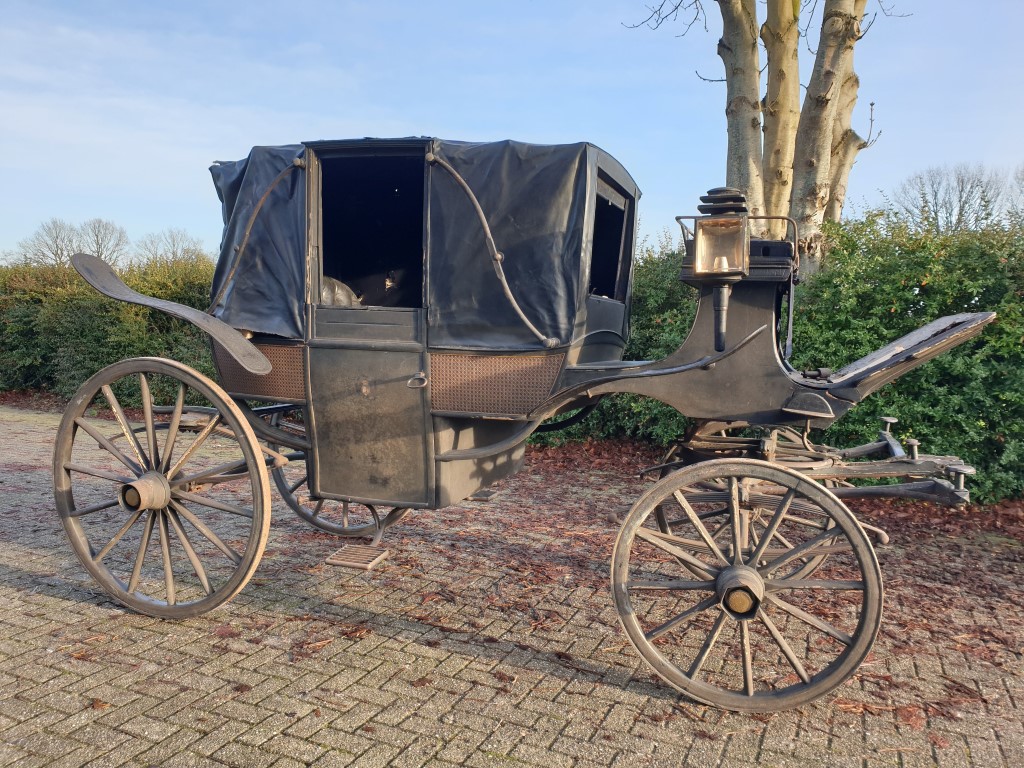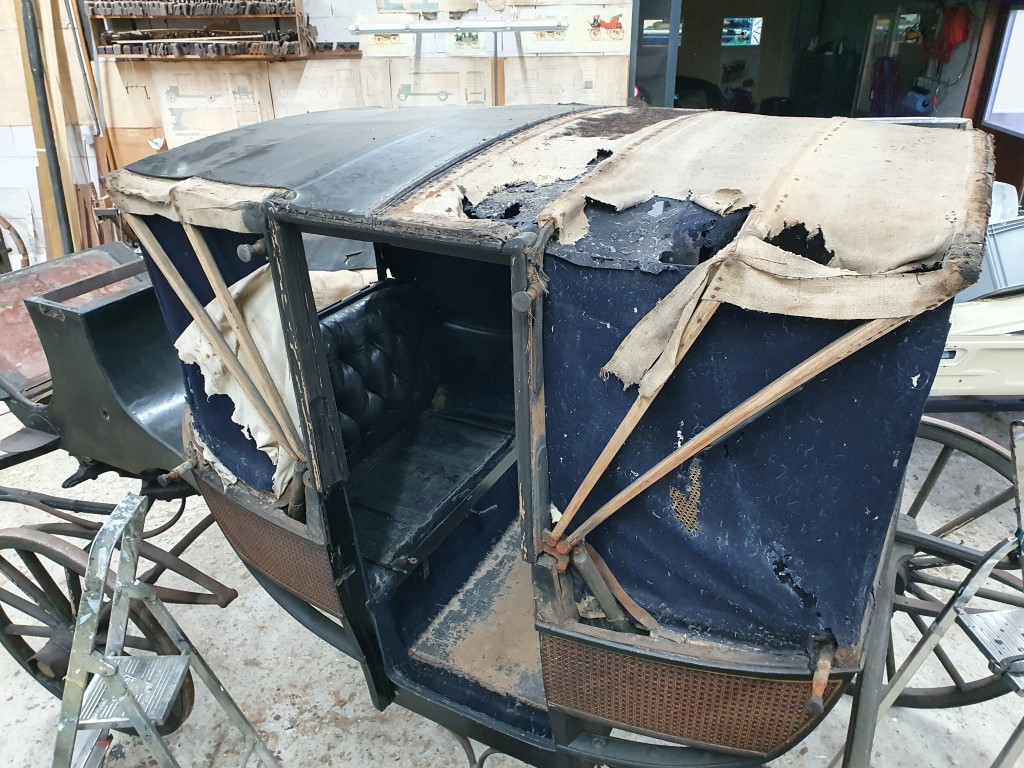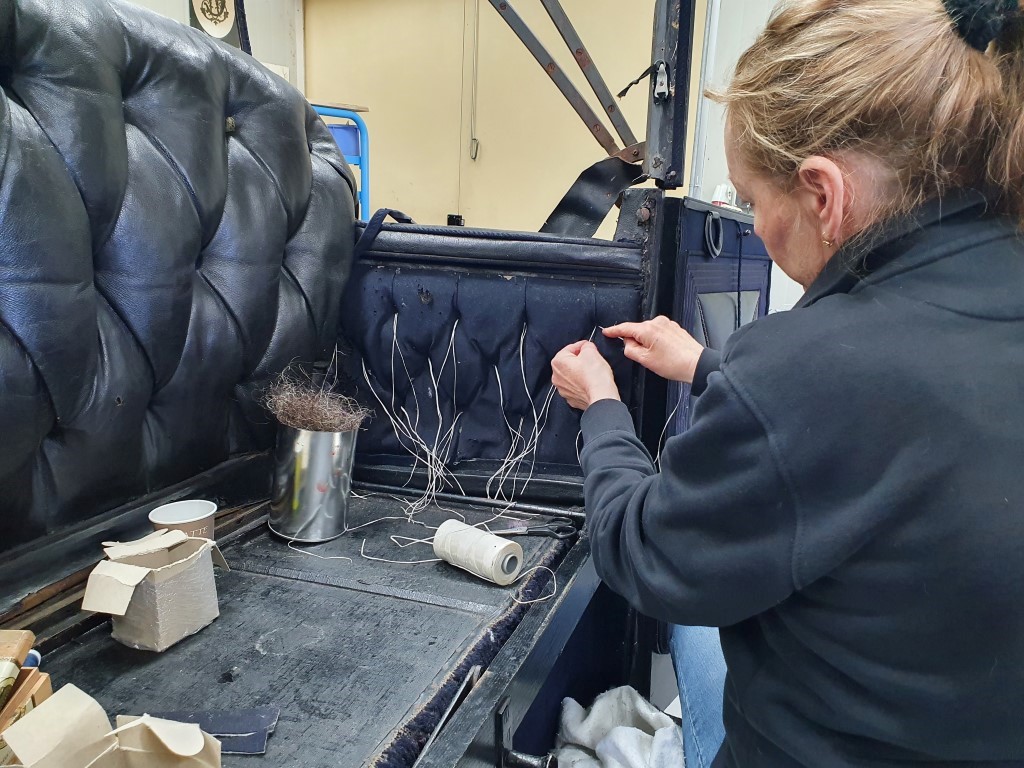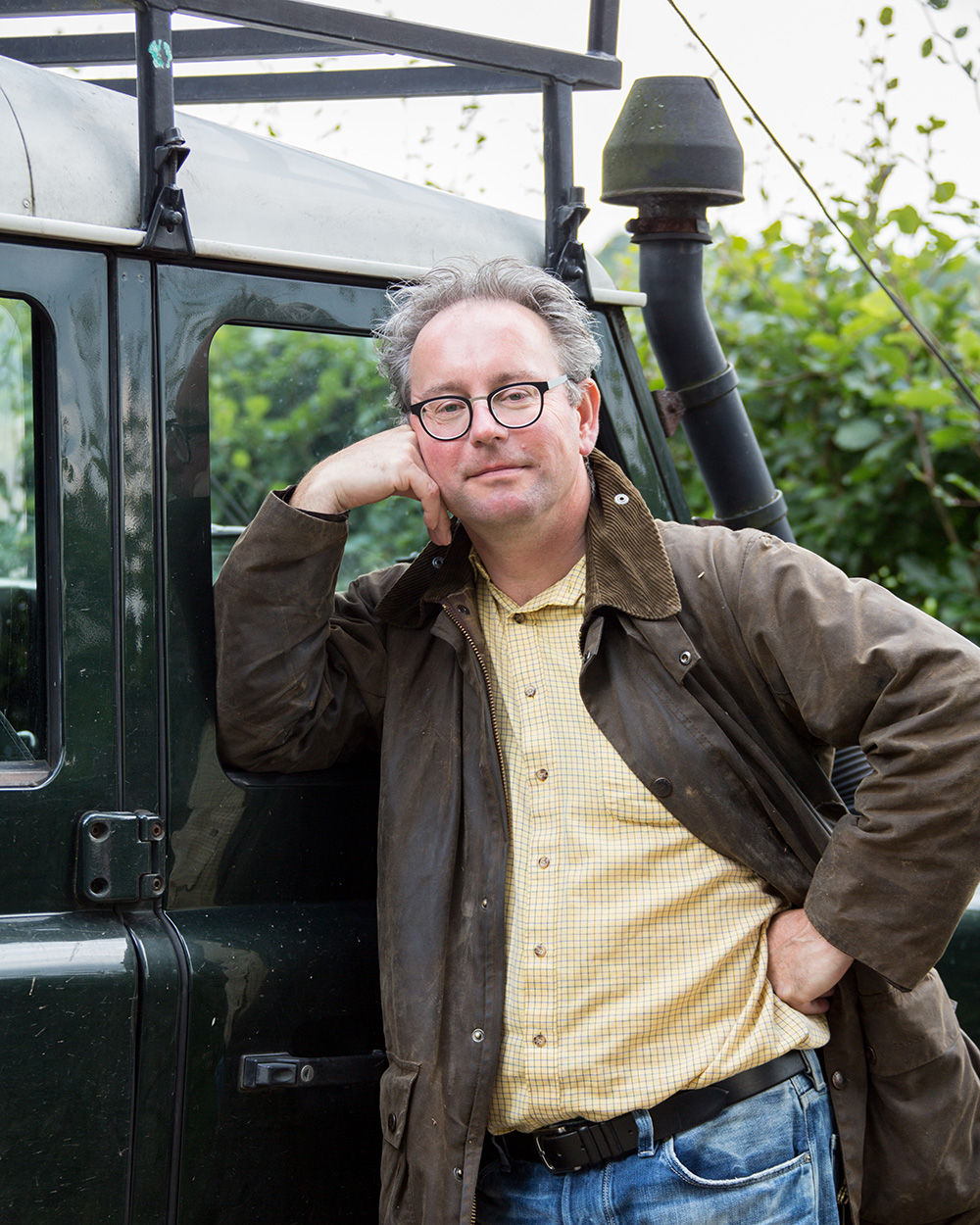Landauer in 10 steps
By: Mario Broekhuis
We have been a little quiet in recent months about the restorations of the carriages that belong at Castle de Haar, but the project is still in full swing. For example, the restoration team is now busy with the landauer (manufactured by Million & Guiet, Paris), the showpiece in deplorable condition. To update you, we will take you one step further in the process every day for the next ten days.

Step 1:
The lamps... yeah, crooked, rusted, dented. But taking them off was impossible, completely rusted. The entire lamp holder had to be taken off to remove the tails of the lamps -with heating-. Now it is up to restorer Jean-Louis Stolk to get the candle lamps straight and shiny again.
Step 2.
After repairing the broken roof trusses, it is the turn of the 'double sky': blue cloth on the inside, cotton on the outside. It is much more work than "stapling a piece of cloth to something" if the canopy is to fall nicely and be put on without folds or creases. Last stage in the restoration of the two hoods (the hallmark of this type of coach) is the leather work... to be continued.
Step 3.
The coachman's footboard was actually off due to rot in the wood. A handy enthusiast would renew that entire front, but look how finely crafted that plank is, besides, it is a museum restoration, and we especially want to show later generations how Million & Guiet made it in 1887. Hence the maximum of the old was reused to still make a stable reconstruction.
Step 4.
Window frames. They slide smoothly down and up into the door using a passement strap, and are upholstered with cloth, the window frames. In a lopsided door, that no longer works. The cloth is eaten away, the wood broken. Restorer Piet Stolk teaches his grandson James the trade....
Step 5.
Capitation. Moths, holes, dirt, mouse droppings. You'd put Grandma's sofa set in this condition in the garbage. Maria Stolk wouldn't. She seals the holes with tiny pieces of leather, patiently cleans the fabric buttons, pulls them in again, rubs up the leather, replenishes the stuffing, replaces cloth that has deteriorated too far, also seals holes in the so-called flounces ("valances") and brings them back into a tight fold. And then you get a fancy 'couch' again, so beautiful, you don't even dare to sit in it now.


Step 6.
Whipping up springs. We would almost forget, but not only was the carriage crooked in construction, the springs were literally tired. As a result, you no longer "looked up" to the carriage. Unfortunately, to get the springs back to the right tension, it is impossible to leave the old paint on, as it requires taking them apart and putting them leaf by leaf into the old-fashioned blacksmith's fire to be whipped up by hand. A second reason to take the spring assemblies apart is battle against rust, you can clean the old paint so finely, when the spring blades start sliding over each other again (natural process of suspension) it is a shame if rust keeps coming out from under them. A job for restorer Piet Stolk.
Step 7.
The buck, and no, not one of those animals with a goatee, the seat of the coachman and domestic servant. Dirty here too, moth holes from the cloth fabric we want to keep. The latter is not possible with the leather with which the railing is covered, as only some crumbling, dried-out scraps of it remain. The leather trim around the seat, however, is still beautifully cleanable, as is the silver trim.
Step 8.
Schamel. Also like this, on the face of it the iron rusted, the wood under a layer of black muck. What to do with it? This is something a restorer constantly asks himself. But the strength of the trade is perseverance. What can't be done, that can't be done, like bringing out some paint from under the rust, but the woodwork... See there, a piping pattern starts to emerge, see the difference left and right. Someone else might have started sanding and then wondered "how do you piping such a carriage?". Here's the irrefutable answer, that's how Million & Guiet did it. And that's how it remains - in old condition, that is.
Step 9.
Cushions, leather on one side, cloth on the other, stuffed with horsehair. The carriage seats four passengers, so there are four cushions to sit on. Two cushions had been lost in the distant past. Then you face two challenges: bringing the old ones back to life and making two new ones, of which an outsider cannot tell which are new. So cleaning, plugging holes, re-knotting and so on. And for future generations, it leaves a message, which cushions are new and which are original.
Step 10.
'Cane work'. You can scrub at it with a brush, but that will damage the fine pattern of the woven reeds on the panels. Plus, you'll wipe even more grease into the edges. So there is only one way left, which is to meticulously clean with the cotton swab. Conservator Maria Stolk is used to it, also to protect herself from inhaling the cleaning agent. And see the result. Beautiful, isn't it?

Mario Broekhuis (51), a stewardship graduate, feels completely at home at a historic country estate like De Haar. Moreover, he knows alesson of carriagesand can tell wonderful stories about it. That is why Mario gives us a monthly update on the progress of the restoration of three carriages for De Haar on this page. The three carriages in this project come from the management of Borg and Nationaal Rijtuigmuseum Nienoord and are transferred to long-term loan by Castle de Haar. This project has been made possible by VZW Pater Davids, Prins Bernhard Cultuurfonds, VSBfonds, Stichting Bonhomme Tielens and Stichting kasteel de Haar. The Hippomobile Heritage Foundation is supervising the implementation and providing communication.
